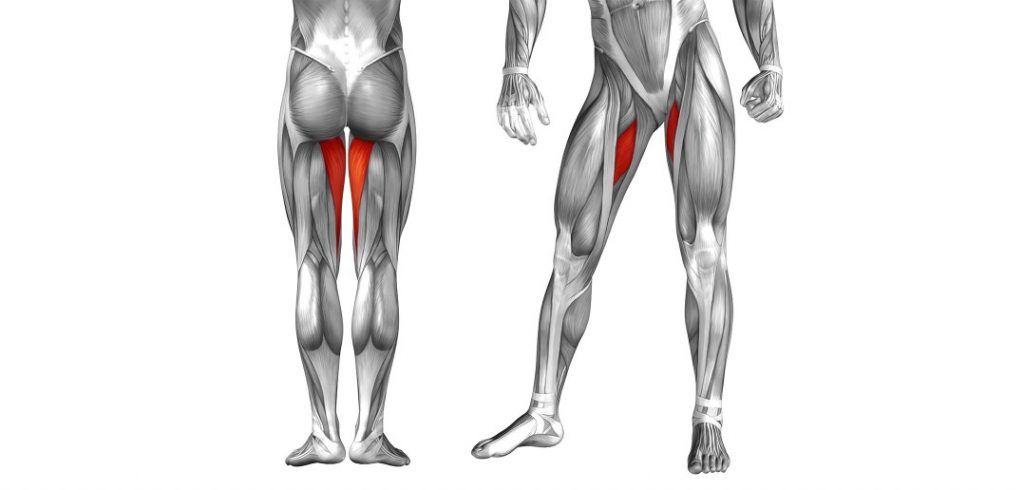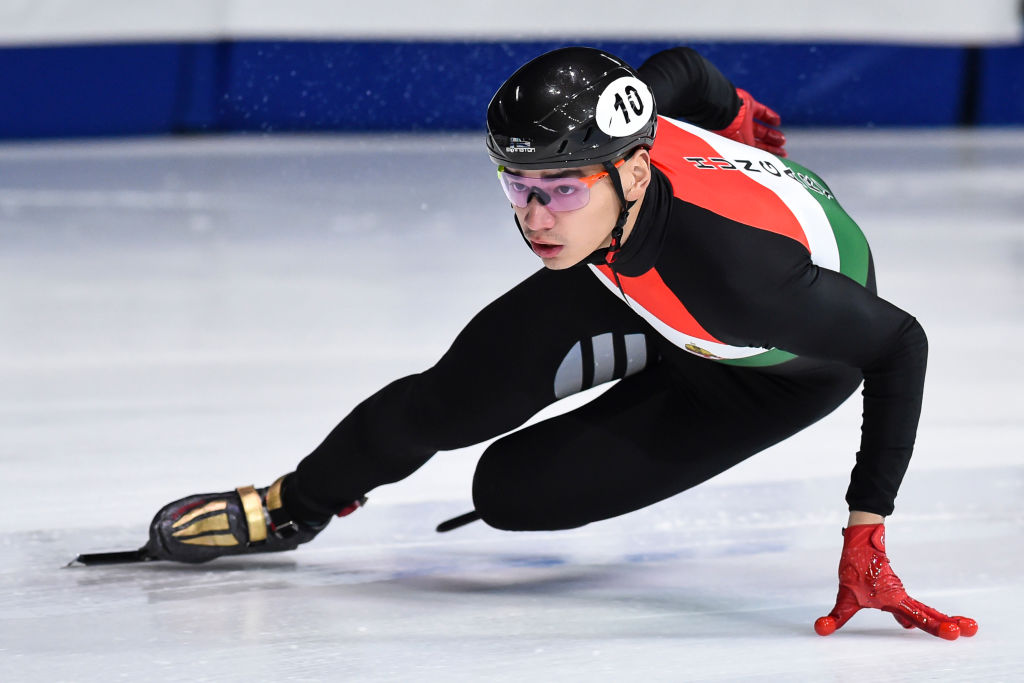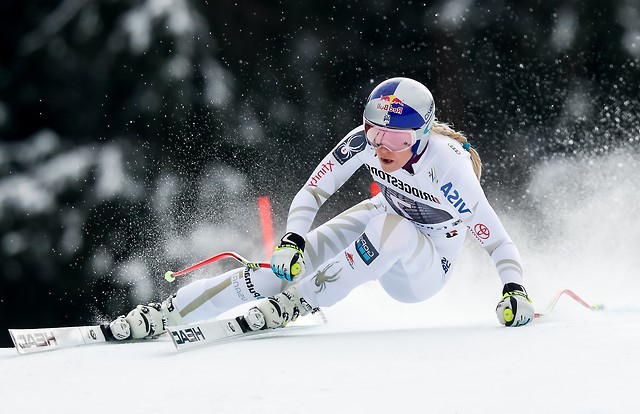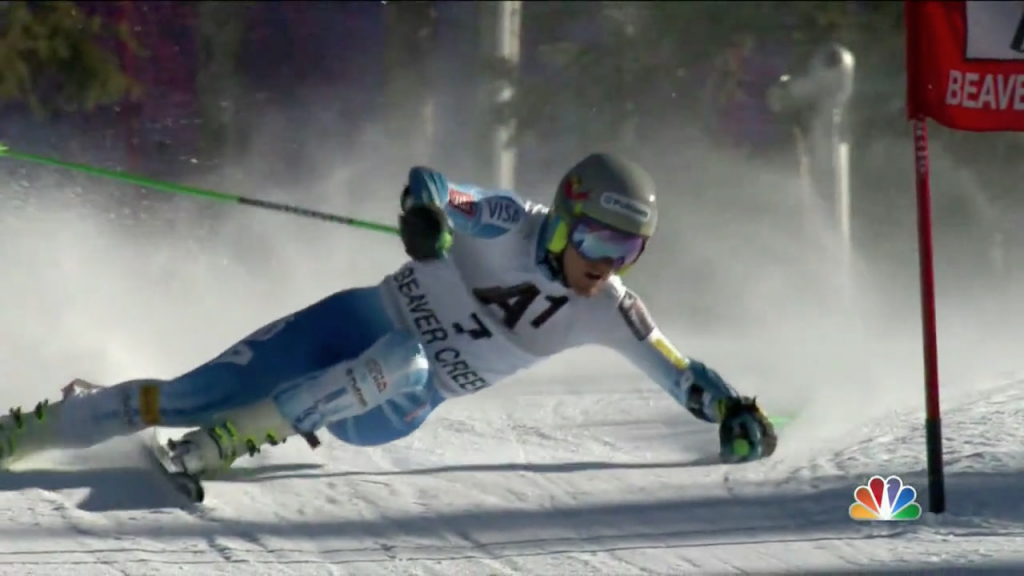Video is a bit short due to a filming error – but the dynamics can still be seen. The body (centre of mass) moves in the right direction.
- Skating
- Snowplough
- Dynamics
- Snowplough plus dynamics
- Individual parallel turns
Skating/Adductors
Skiing is just disguised skating. The main difference is the skis are wide and have two edges. When diverging the skis outwards at the tips into a skating stance the skis want to flatten on the snow and the stiff shaft of the ski boots will pull the knees outward. The adductor muscles need to be engaged to hold the skis on their inside edges. This is a pattern of muscle use – the adductors of both legs contracting – that should be maintained when skiing parallel. This is partly dependent on the skier’s morphology. If the femurs are naturally directed inwards less adductor use might be appropriate but if slightly bow legged there may be a need to consciously work the adductors.
Only when snowplough braking should the adductors be released to widen the spreading of the tails of the skis from this hip joints.



The other difference between skis and skates: – it’s just that skis bend and scribe arcs on the ground and are generally used on slopes not flat lakes. Skating actions are fundamental for a skier’s development because they involve independent leg action where only one leg at a time is really used. Although skiers can stand on two feet the body is oriented specifically on one hip joint at a time (when turning) and has to function as if standing on one leg. Skating exercises such as skating step turns are helpful in developing basic skills. Skating turns use diverging skis (opposite from snowplough) and incremental stepping of the centre of mass inward toward the turn centre. This is ideally the first sort of turning that any complete beginner should experience – on flat terrain.
Using the Skating Muscle to turn in a Snowplough
Integrating the skating muscle (adductor) with the plough is a simple act of activating the muscle on one leg only – the one you want to push you around (left leg turns you to the right). You simply get more strongly deflected due to placing one ski slightly more on edge. There is no “transfer of weight” etc. and you are not trying to apply “pressure” to a ski.
Try however to keep any pressure derived from the skis on the fronts of the skis – that’s where most turning power comes from.
Using Dynamics to turn in a Snowplough
Extend the “outside” leg to move the centre of mass across the skis in the direction of the desired turn. This is exactly the same movement as a step in skating step turns – but both skis remain on the ground with the tips converging.
This exercise exposes the fact that it’s not “pressure” that is the key factor in turning – it’s the geometric relation of the skis to the slope. Moving the centre of mass across the skis laterally towards the inside of a desired turn will always cause an appropriate turning effect from both skis regardless of whether they are converging (as in snowplough), parallel or diverging (as in skating).
Once dynamics are integrated then – as in parallel skiing – the adductors of both legs should be kept constantly active (not just one leg active).
Basic Dynamics (skis parallel)
- Skis must be travelling forward – like a bicycle
- This is mainly about using the outside leg (start of new turn) to push the centre of mass into the centre of the new turn – for the whole duration of the turn
- There is no “balance” when skiing – dynamics is the physics of disequilibrium
- You are looking for stability from organised accelerations (ski technology!)
- Notice in the photos below the outside leg is essentially straight in a skating action (flexion for absorption and other purposes is primarily at the hip joint)
- The centre of mass goes down toward the snow – and to complete the turn it comes back up – like a motorbike in a turn
- There is no “Centrifugal Force” acting on the skier – only a deflection inward away from a straight line. This deflection is used to lift the skier up at the end of the turn – which involves “finishing” the turn – I.E. turning almost back up the hill.
- Remain square to the skis (follow the skis around the turn with your body) until you are really comfortable with movement of the centre of mass and clearly aware of moving it.


